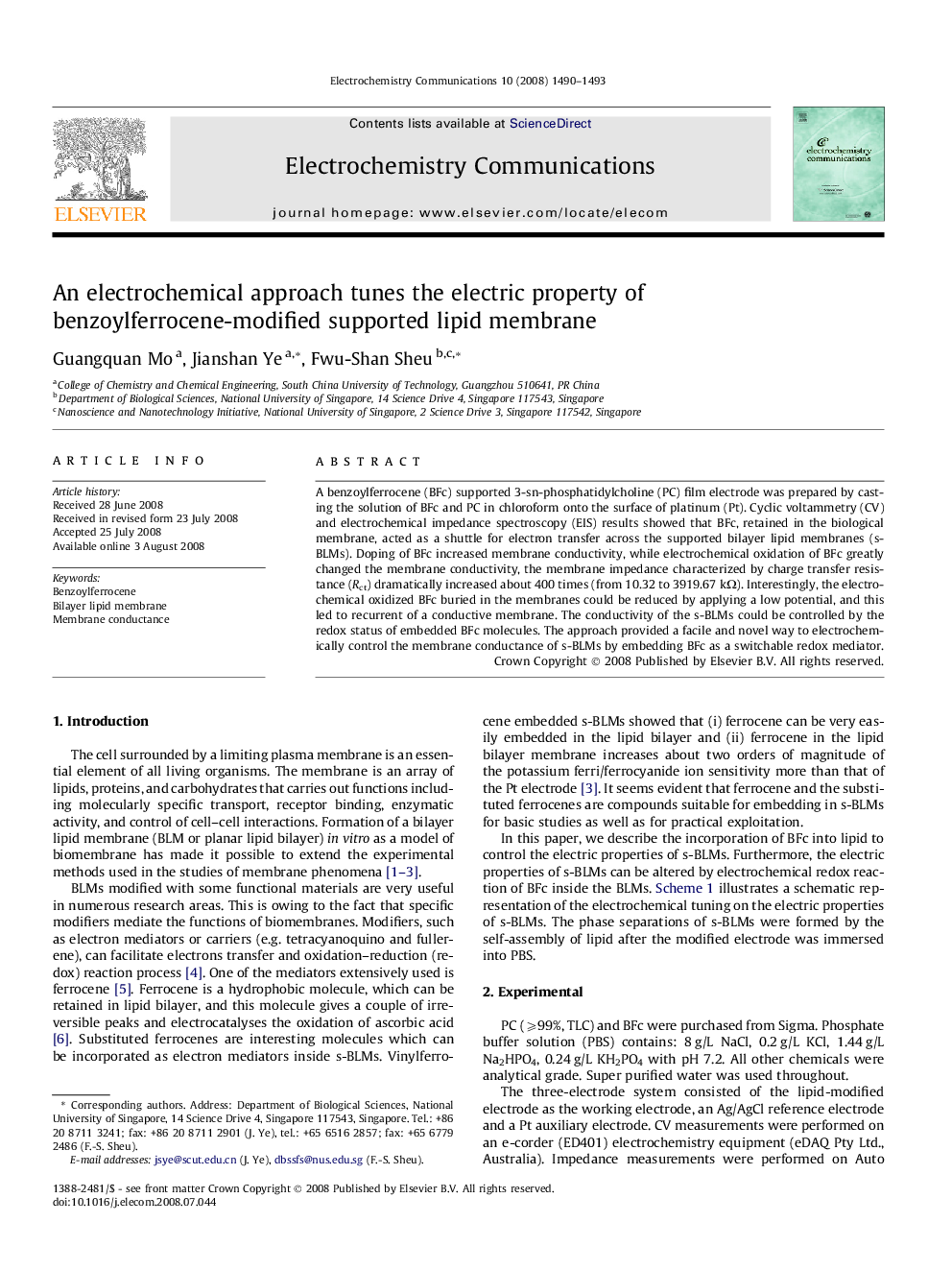| Article ID | Journal | Published Year | Pages | File Type |
|---|---|---|---|---|
| 181016 | Electrochemistry Communications | 2008 | 4 Pages |
A benzoylferrocene (BFc) supported 3-sn-phosphatidylcholine (PC) film electrode was prepared by casting the solution of BFc and PC in chloroform onto the surface of platinum (Pt). Cyclic voltammetry (CV) and electrochemical impedance spectroscopy (EIS) results showed that BFc, retained in the biological membrane, acted as a shuttle for electron transfer across the supported bilayer lipid membranes (s-BLMs). Doping of BFc increased membrane conductivity, while electrochemical oxidation of BFc greatly changed the membrane conductivity, the membrane impedance characterized by charge transfer resistance (Rct) dramatically increased about 400 times (from 10.32 to 3919.67 kΩ). Interestingly, the electrochemical oxidized BFc buried in the membranes could be reduced by applying a low potential, and this led to recurrent of a conductive membrane. The conductivity of the s-BLMs could be controlled by the redox status of embedded BFc molecules. The approach provided a facile and novel way to electrochemically control the membrane conductance of s-BLMs by embedding BFc as a switchable redox mediator.
